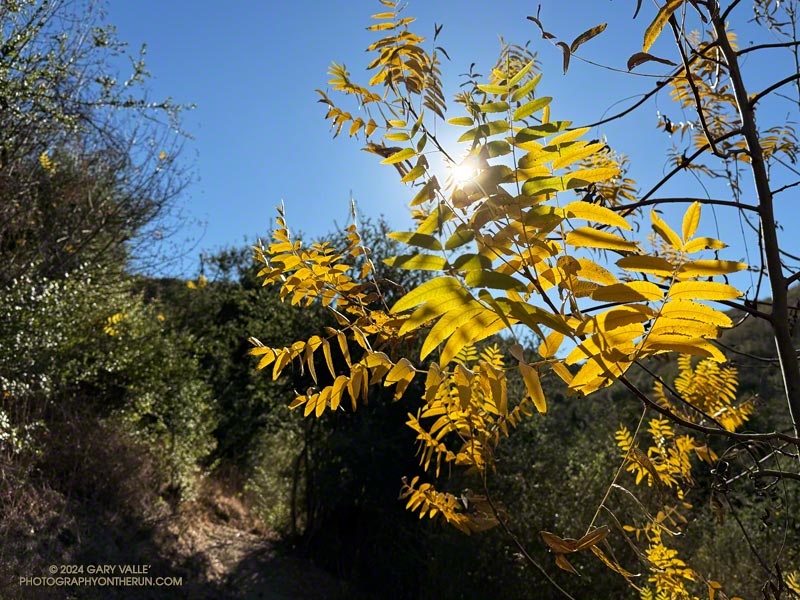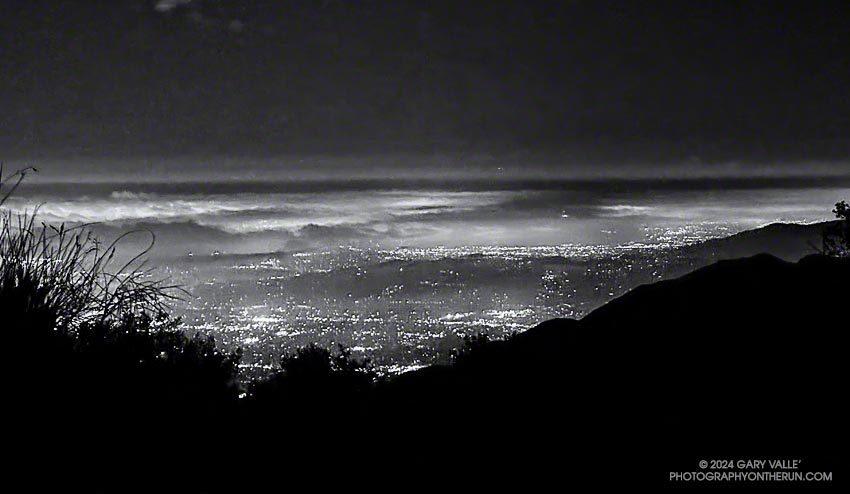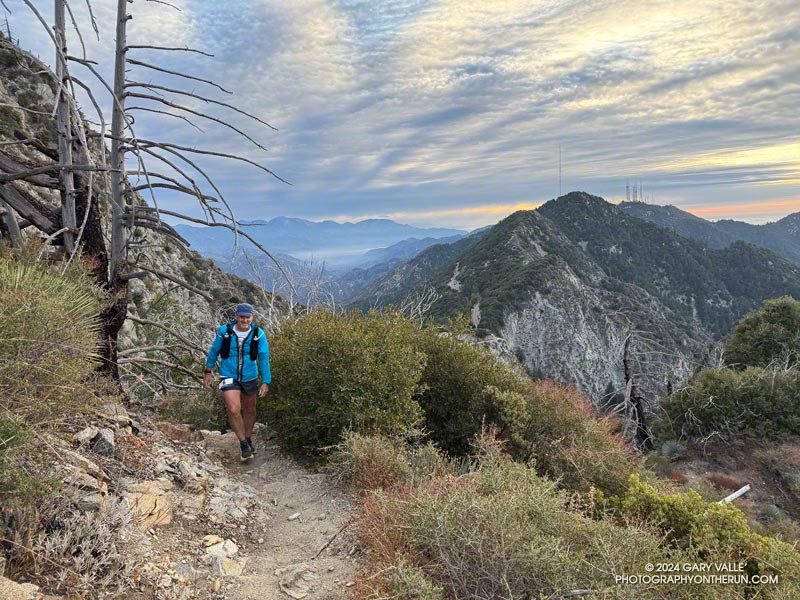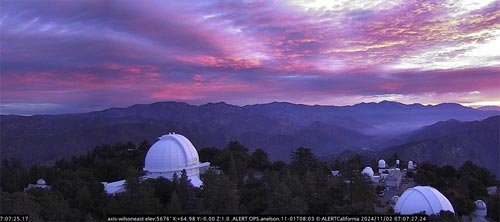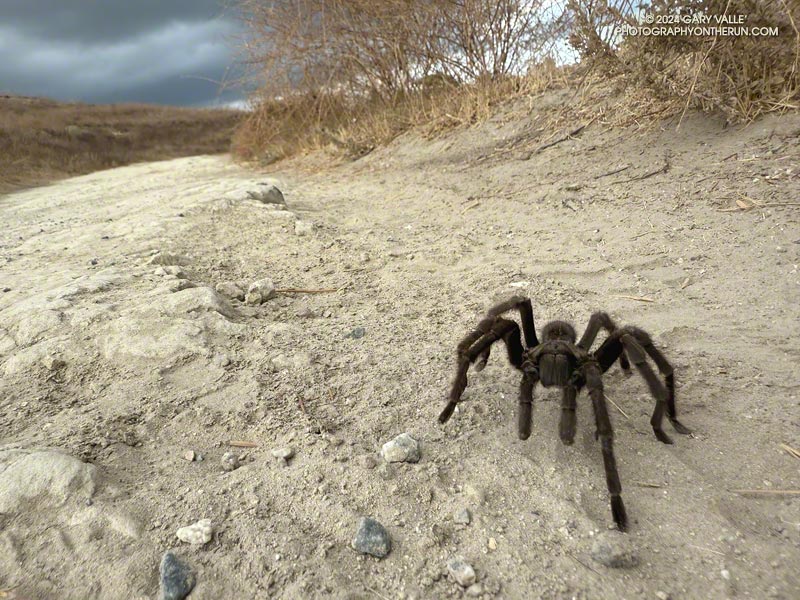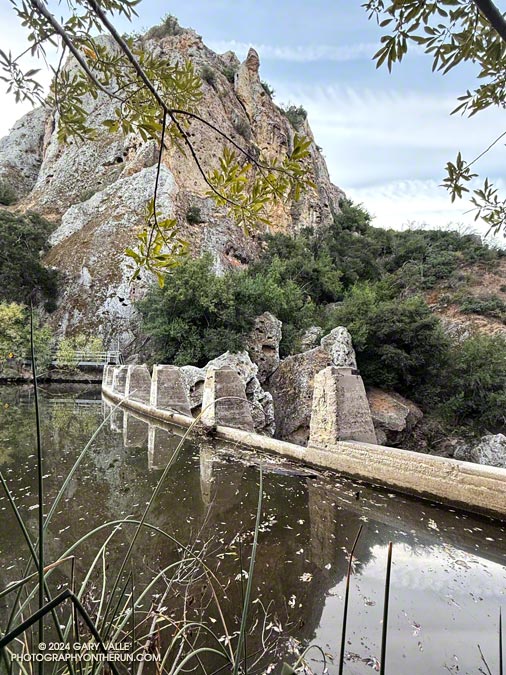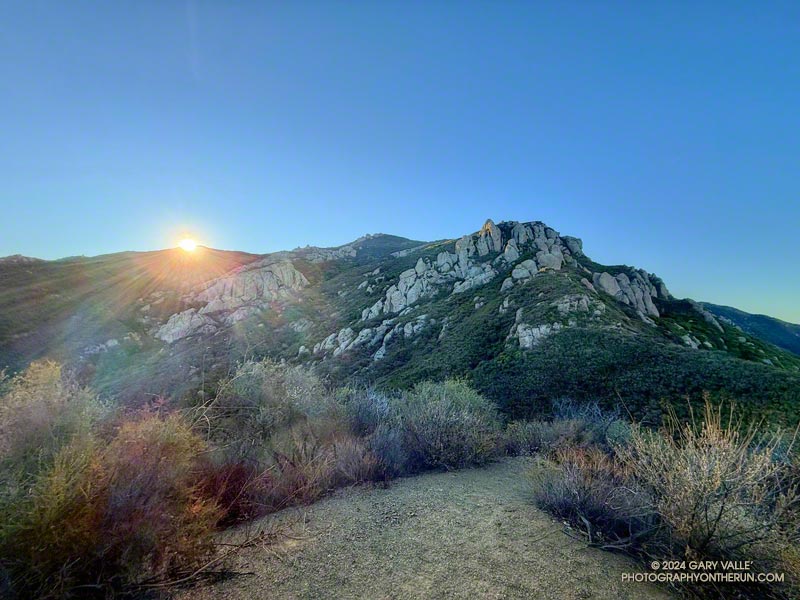
As I reached the benchmark on the top of the first hill on Boney’s western ridge, the sun creeped over the crest of Boney Mountain.
It had taken me about an hour to reach the benchmark from the Wendy Drive trailhead. It would take another hour to scramble up the ridge to the high point on the crest (unofficially “Boney Point”), and then another hour to work over Tri Peaks to the Backbone Trail and the summit of Sandstone Peak.
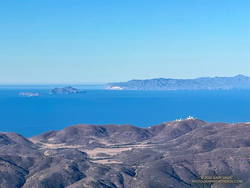
From the crest there were splendid views of Sandstone Peak, Tri Peaks, and the Channel Islands. Captivated by the vista, my thoughts drifted to a trail run on Santa Cruz Island, where I had enjoyed the reciprocal view of Boney Mountain from El Montañon.
Once again, I got to the summit of Sandstone when no one was on the peak. After recording a video panorama from the summit, I scrambled back down the peak and then headed west on the Backbone Trail to the top of the Chamberlain Trail. Boney Bluff looms above the trail here and marks the beginning of the long descent to the Old Boney Trail.
On the way down Chamberlain, I talked to a hiker that was also doing an adventurous loop from the Wendy Drive Trailhead. At the top of the Chamberlain Trail he was planning to take the Tri Peaks Trail to Tri Peaks, and then work over to “Boney Point.” From there, he was going to descend the Lost Cabin Trail.
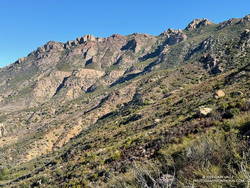
At the bottom of the Chamberlain Trail I turned right on the Old Boney Trail and continued down to Blue Canyon. I hadn’t been through Blue Canyon since January and was curious to see how it fared after all the rainy season storms. The canyon is filled with rocky debris from millennia of flash floods. Flooding in the canyon sometimes obliterates sections of the Backbone Trail. Today, it looked like use and trailwork had reestablished washed out sections of the meandering trail.
Here’s a high resolution, interactive, 3D-terrain view of my route from Wendy Drive to Sandstone Peak and return via the Backbone Trail, Sycamore Canyon, and the Upper Sycamore Trail.
Some related posts:
– Not So Busy Sandstone Peak
– Looking for Boney Mountain
– Looking for Boney Peak
– Looking for Boney Bluff

